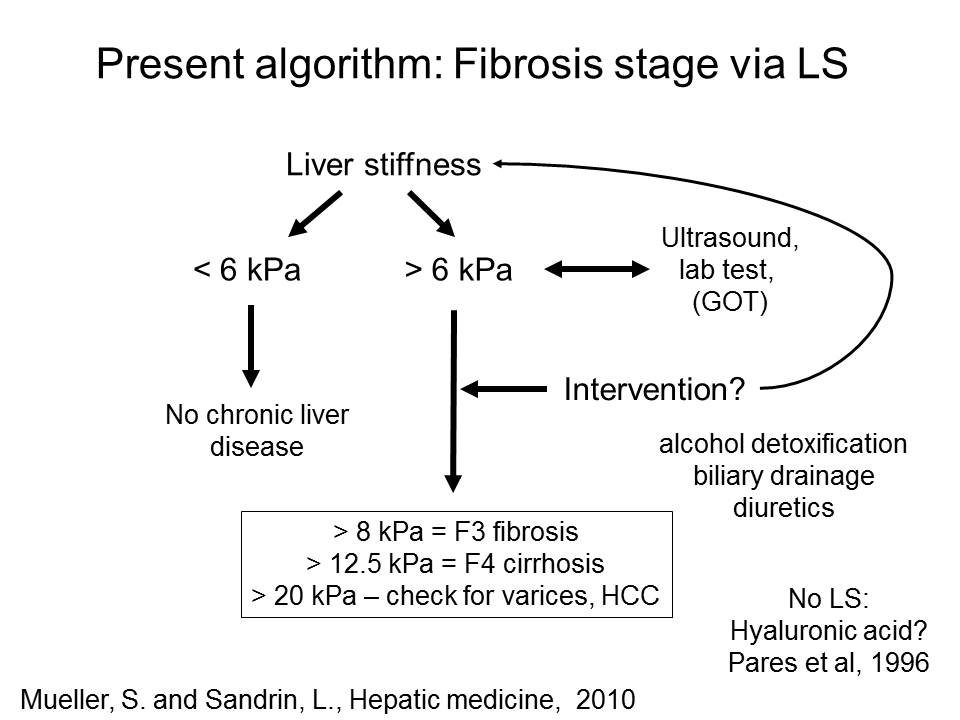|
Research homepage Sebastian Mueller, MD,
PhD
[ Nach oben ] [ Sinusoidal pressure hypothesis ] [ SPH cellular level ] [ SPH hemodynamic level ] [ Liver stiffness conditions ] [ fibrosis assessment by liver stiffness ] [ Liver stiffness cut-off values ]
| |
Liver
stiffness: a novel parameter for the diagnosis of liver disease
Sebastian
Mueller, Laurent Sandrin
Hepatic
Medicine: Evidence and Research Published Date May
2010 , Volume 2010:2 Pages 49 - 67
The noninvasive quantitation of liver stiffness (LS) by ultrasound based
transient elastography using FibroScan® has revolutionized the diagnosis of
liver diseases, namely liver cirrhosis. Alternative techniques such as acoustic
radiation impulse frequency imaging or magnetic resonance elastography are
currently under investigation. LS is an excellent surrogate marker of advanced
fibrosis (F3) and cirrhosis (F4) outscoring all previous noninvasive approaches
to detect cirrhosis. LS values below 6 kPa are considered as normal and exclude
ongoing liver disease. LS of 8 and 12.5 kPa represent generally accepted cut-off
values for F3 and F4 fibrosis. LS highly correlates with portal pressure, and
esophageal varices are likely at values >20 kPa. Many other factors also
increase LS such as hepatic infiltration with tumor cells, mast cells
(mastocytosis), inflammatory cells (all forms of hepatitis) or amyloidosis. In
addition, LS is directly correlated with the venous pressure (eg, during liver
congestion) and is increased during mechanic cholestasis. Thus, LS should always
be interpreted in the context of clinical, imaging and laboratory findings.
Finally, LS has helped to better understand the molecular mechanisms underlying
liver fibrosis.

|
